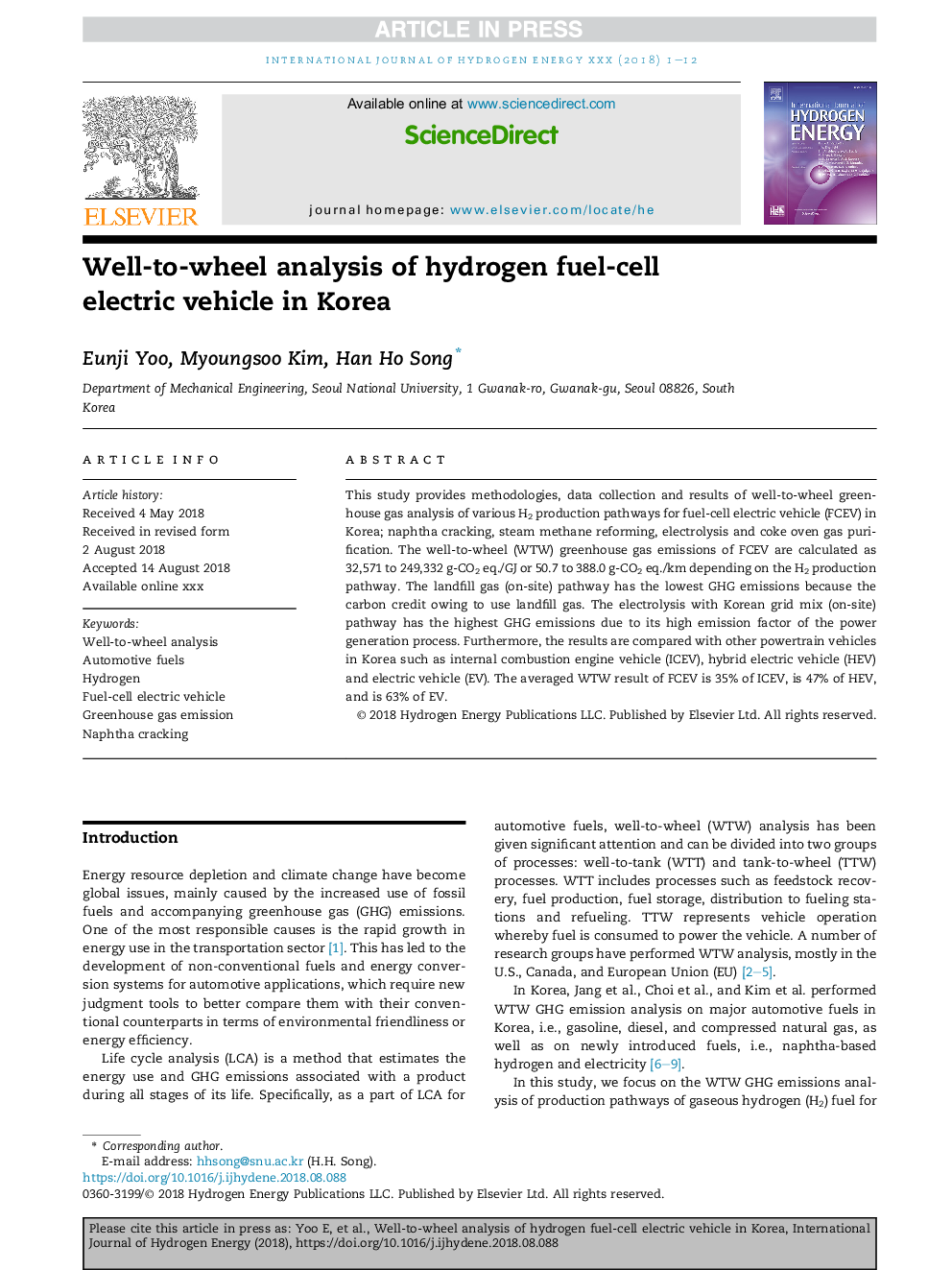| Article ID | Journal | Published Year | Pages | File Type |
|---|---|---|---|---|
| 11011677 | International Journal of Hydrogen Energy | 2018 | 12 Pages |
Abstract
This study provides methodologies, data collection and results of well-to-wheel greenhouse gas analysis of various H2 production pathways for fuel-cell electric vehicle (FCEV) in Korea; naphtha cracking, steam methane reforming, electrolysis and coke oven gas purification. The well-to-wheel (WTW) greenhouse gas emissions of FCEV are calculated as 32,571 to 249,332Â g-CO2 eq./GJ or 50.7 to 388.0Â g-CO2 eq./km depending on the H2 production pathway. The landfill gas (on-site) pathway has the lowest GHG emissions because the carbon credit owing to use landfill gas. The electrolysis with Korean grid mix (on-site) pathway has the highest GHG emissions due to its high emission factor of the power generation process. Furthermore, the results are compared with other powertrain vehicles in Korea such as internal combustion engine vehicle (ICEV), hybrid electric vehicle (HEV) and electric vehicle (EV). The averaged WTW result of FCEV is 35% of ICEV, is 47% of HEV, and is 63% of EV.
Related Topics
Physical Sciences and Engineering
Chemistry
Electrochemistry
Authors
Eunji Yoo, Myoungsoo Kim, Han Ho Song,
